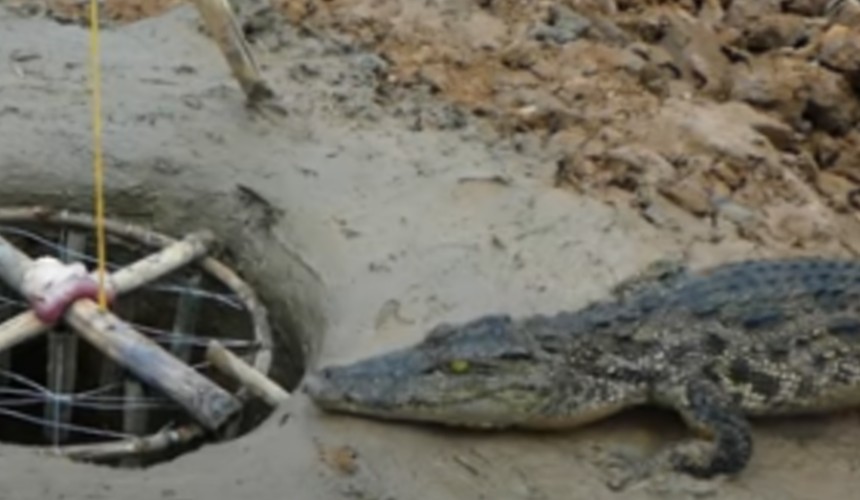
The saltwater crocodile is one of Australia's most feared creatures, and with good reason. A fully grown male can grow to 7 metres long and is capable of snatching cattle or horses that come to drink at watering holes so an unwary human is certainly no match for these prehistoric looking reptiles, therefore any attempt to go near one, let alone catch one should definitely be left to the experts!
There are quite a few different methods of catching crocs, which depends on many variables, including the variety of crocodile (freshwater crocs are not really harmful to humans apart from the odd nasty bite), the size, and whether the animal has been raised in captivity and is a little more “used” (if there is such a thing!) to being handled and or caught.
Catching these gigantic reptiles in the wild in a dangerous and highly skilled occupation. Various methods of trapping may be used, including soft mesh traps and “floating” aluminium traps. To successfully catch a crocodile with a soft mesh trap on the riverbank, initially some reconnaissance must be done to determine several factors such as the size and habits of the target animal.
By scouting the riverbanks or waterways for slides, (marks made by crocodiles in the mud on the banks of the rivers as they enter or exit), claw marks and imprints, the croc hunter will gain an idea as to what areas the crocodiles frequent and of course, their size, which is all important when setting up a successful trap. Crocodiles are intelligent creatures that can become “trap-shy” so it is important that all factors are taken into consideration.
Once the crocodile's favourite haunt has been established, a trap site can be set up within a 50m radius. Setting traps is complex and as previously stated, is for people who have a vast knowledge of crocodile behaviour. The trap must be large enough so that the reptile doesn't touch the sides or roof, and if soft mesh is used, set up with sticks to form a cocoon effect, with the bait at the end. It must be on a sturdy, gentle slope near or at the edge of the water, but not far enough in that should the crocodile be trapped and tidal waters rise, the animal is in any danger of drowning.
In the case of a soft mesh trap, once the crocodile goes to the end of the trap and realises it's caught, it will begin to thrash about and the sticks holding the trap in a cocoon shape will fall away and the croc should theoretically be waiting for it's captors the next morning.
If a “floating trap” aluminium trap is being used, it is dragged into position by a boat, and left floating until the crocodile enters and takes the bait which triggers the trap door. This is a basic overview of the methods commonly used in Australia, but it must be reiterated that there are fewer more dangerous, powerful animals lurking in rivers and waterholes, any attempt at approaching them is to be left to seasoned professionals!
Go back to the wildliferemovalaustralia.com home page.
Copyright 2021 - wildliferemovalaustralia.com
Wildlife Removal Australia